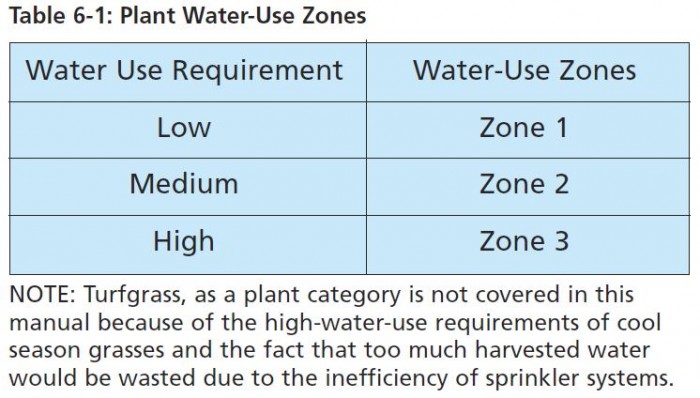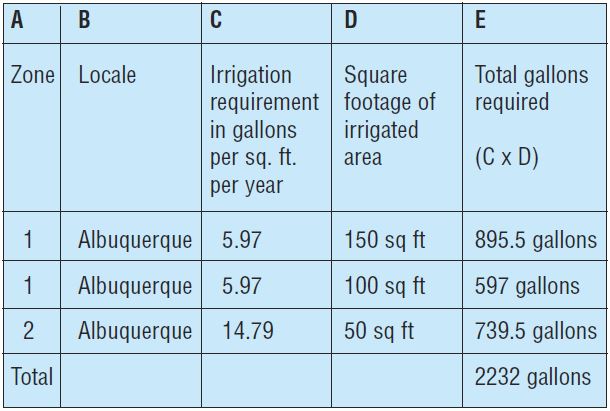The PermaDesign Weblog, with Nate Downey and Melissa McDonald!
Roof-Reliant Landscaping™ Step 14B: Water-Budgeting Basics: Income and Outlays
The basics are the same for every water budget. Every time period starts with a projected quantity of water in storage, and a projected quantity of income water in the form of newly harvested precipitation. These two variables will depend on the size of your catchment area, the amount of precipitation captured in a given year and the size of your storage tank. A detailed description of how to calculate the projected quantity of storage and income water is presented in an earlier blog, Sizing Your Cistern.
Water outlays are delivered from storage to your landscape plants. There are many variables that need to be taken into account when calculating outlays, and this section is designed to estimate landscape water needs in order to determine the appropriate storage. Actual irrigation requirements will depend on several variables including age of plants, density of plantings, soil type and distribution efficiency.
To determine how much water a given plant needs, please answer the following questions:
• Where in the state do you live?
• What is the irrigation requirement of the plant
(low, medium or high)? For the purposes of this manual, low-water-use plants are called “zone 1” plants. Medium-water-use plants are “zone 2” plants and high-water-use plants are “zone 3.” If you are unsure, please ask a local nursery person or county extension agent.
From a roof-reliant landscaping standpoint, the most important factor in plant irrigation is the water-use requirement of the plant. While similarly sized low-water-use (zone 1) perennials and trees do have slightly different water requirements in the landscape, these differences are not significant when compared to the differences between low-water-use plants (zone 1) and medium-water-use (zone 2) or high-water-use (zone 3) plants.
The information found in Appendix 3 of the Roof Reliant Landscaping manual, Landscape Irrigation Requirements in New Mexico, shows the amount of water required by different types of plants in different parts of the state in gallons per square foot per year. Because the root area of a large “zone 2” tree covers more square footage than the root area of a flowering “zone 2” perennial, the tree requires more supplemental water to maintain than the perennial. However, the rate of water applied per square foot is the same for both plants.
To find the estimated irrigation requirements in a normal-weather year in gallons per square foot for different water-use zones, simply find the appropriate line in Appendix 3. For example:
Make sure to use the irrigation requirement for your locale or the locale closest to you. For each different plant in each water-use-requirement zone, make a new entry in the worksheet in Appendix 2. The example shown below is for Albuquerque and assumes a mature landscape.
NOTE: Newly established plants need more water in order to
get established in the landscape. Multiply the figures in
Appendix 3 by 1.2 to determine first-year water requirements.
For year two, multiply these figures by 1.1 and for year three
multiply by 1.05. For all subsequent years use the figures in
Appendix 3.
01/03/2016 | (0) Comments













Comments